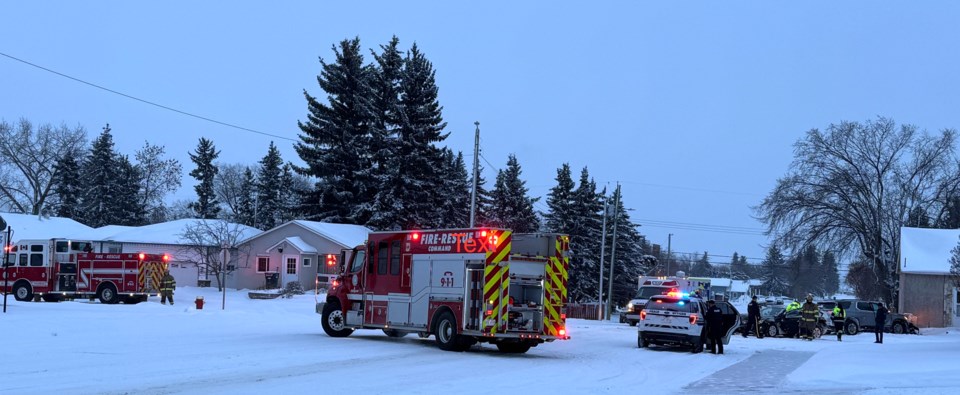ST. PAUL - St. Paul Fire Department responded to almost as many vehicle accidents as they did all types of fires combined in 2024.
According to Fire Chief Trevor Kotowich, the volunteer fire department was on scene at 48 motor vehicle collisions, 35 smoke or carbon monoxide alarms, 24 medical assists, 22 wildland fires, 15 structure fires, 10 vehicle fires, eight rubbish fires, five elevator rescues, and four downed power line incidents in 2024.
They also had 19 cancelled calls, where they were stood down by another fire department, EMS, or RCMP after they were already on route.
Asked if there was a particular elevator responsible for all the calls, Kotowich noted there are 13 locations with elevators in the Town of St. Paul, and most years the department responds to four or five stuck elevator calls.
“As with all of their skills, St. Paul Firefighters receive ongoing training regarding elevator rescue and utilize specialized equipment that assists with access to the passenger compartment,” said Kotowich.
The St. Paul fire department currently has 35 members, including the two new recruits joining the roster in January.
“Ideally, our full roster is 39, but it is getting more and more challenging to recruit newer members. This is a problem that is not only local, but national also,” said Kotowich.
He said the members meet for training three times a month and complete ongoing certification courses on weekends throughout the year.
Volunteer firefighter Lyle Hovelkamp received his 40-year service pin in 2024. Hovelkamp is the longest serving member in the department’s history, both active and retired.
Looking ahead to 2025, the St. Paul Fire Department is looking forward to receiving a new County fire truck in September 2025, when it will also be celebrating 80 years of service. According to Kotowich, plans are already underway for a fall ball to mark the milestone.
This holiday season, Kotowich said the department would like to remind everyone to check their smoke and carbon monoxide detectors.
“Statistics tell us that early warning detection for both smoke and CO is your greatest chance of survival,” said Kotowich.
Carbon monoxide, also called the “silent killer” is a poisonous gas with no smell, scent, or taste. It is produced by the incomplete burning of fuels like natural gas, propane, heating oil, kerosene, coal, charcoal, or wood.



